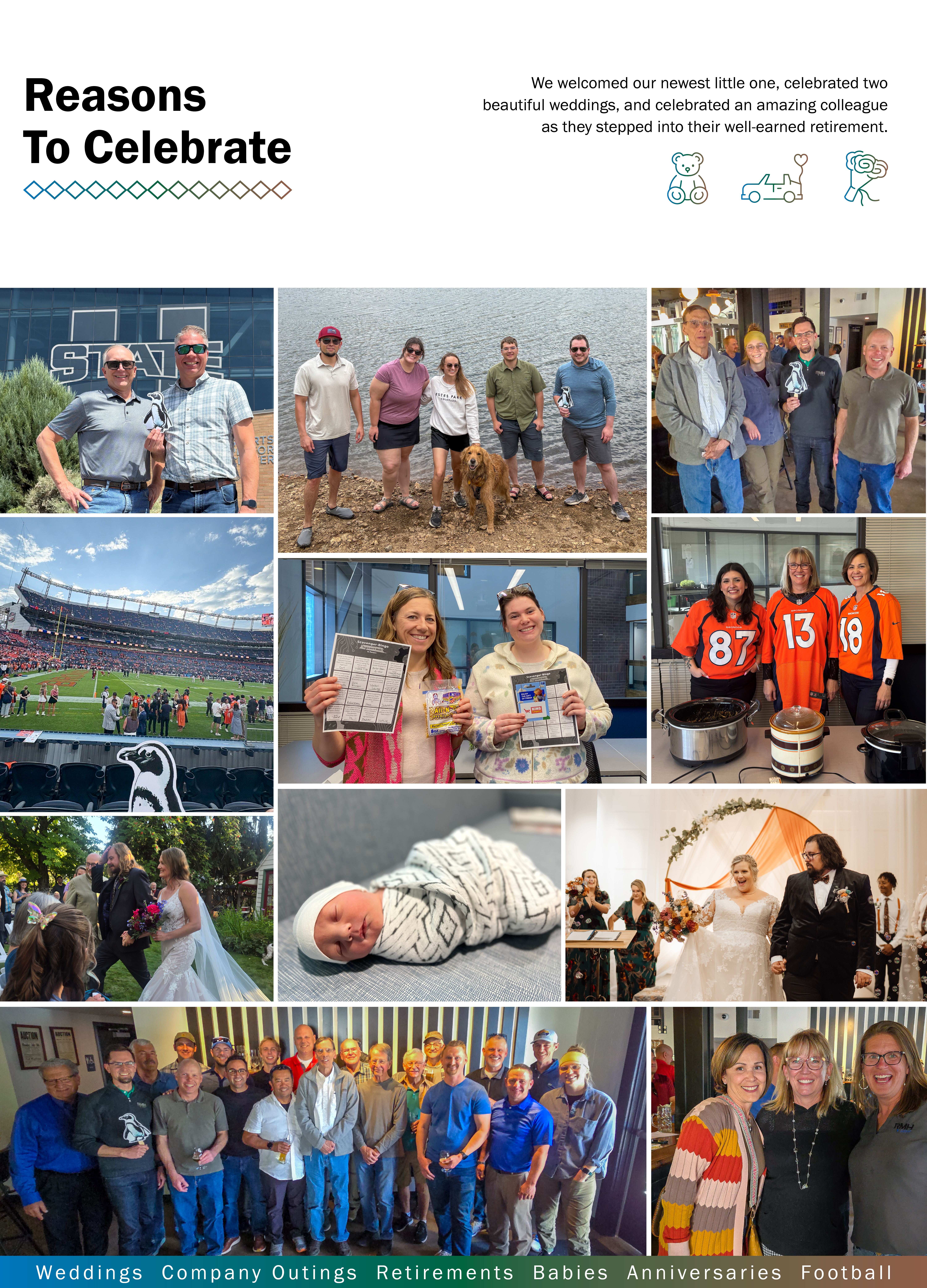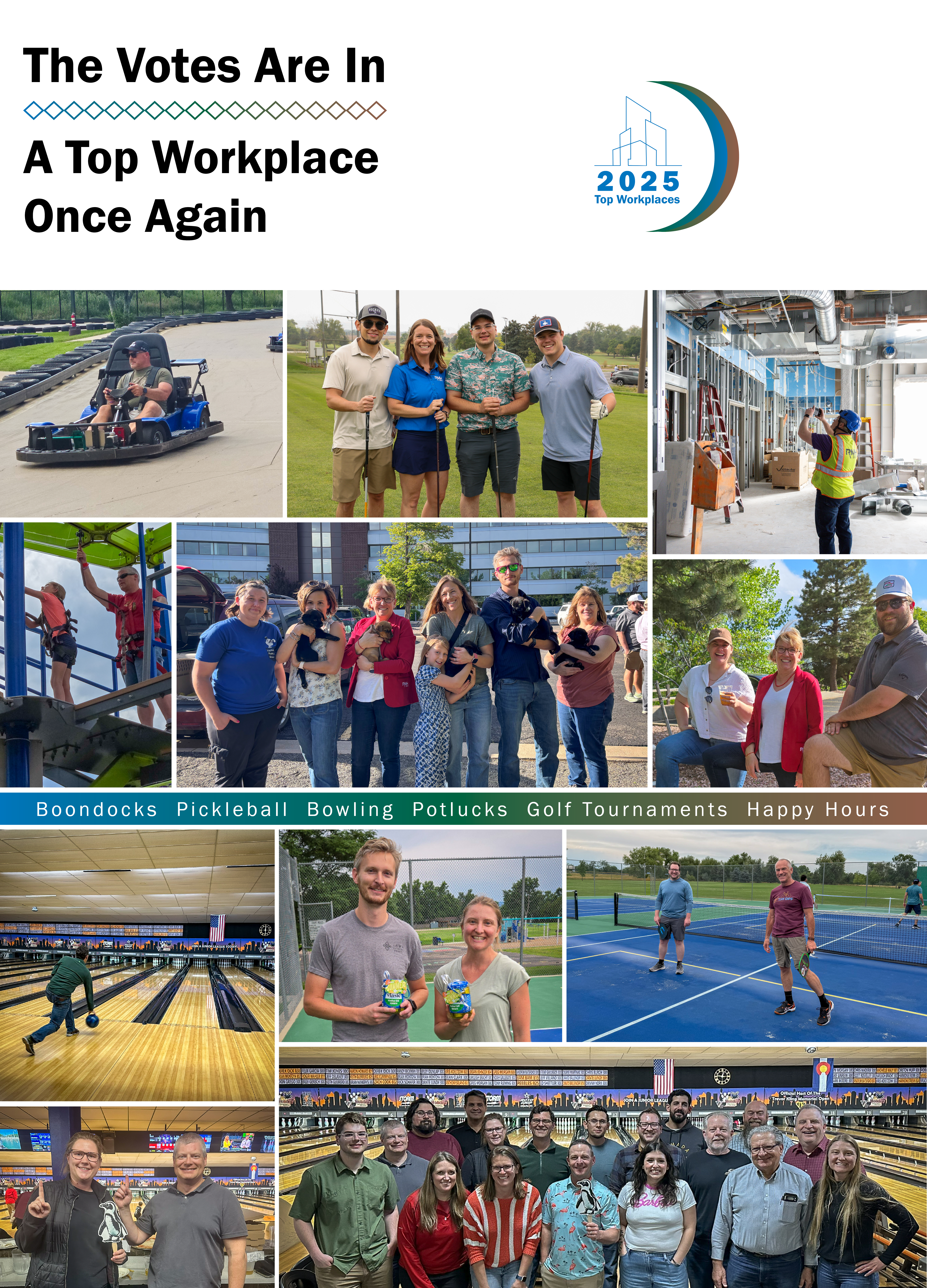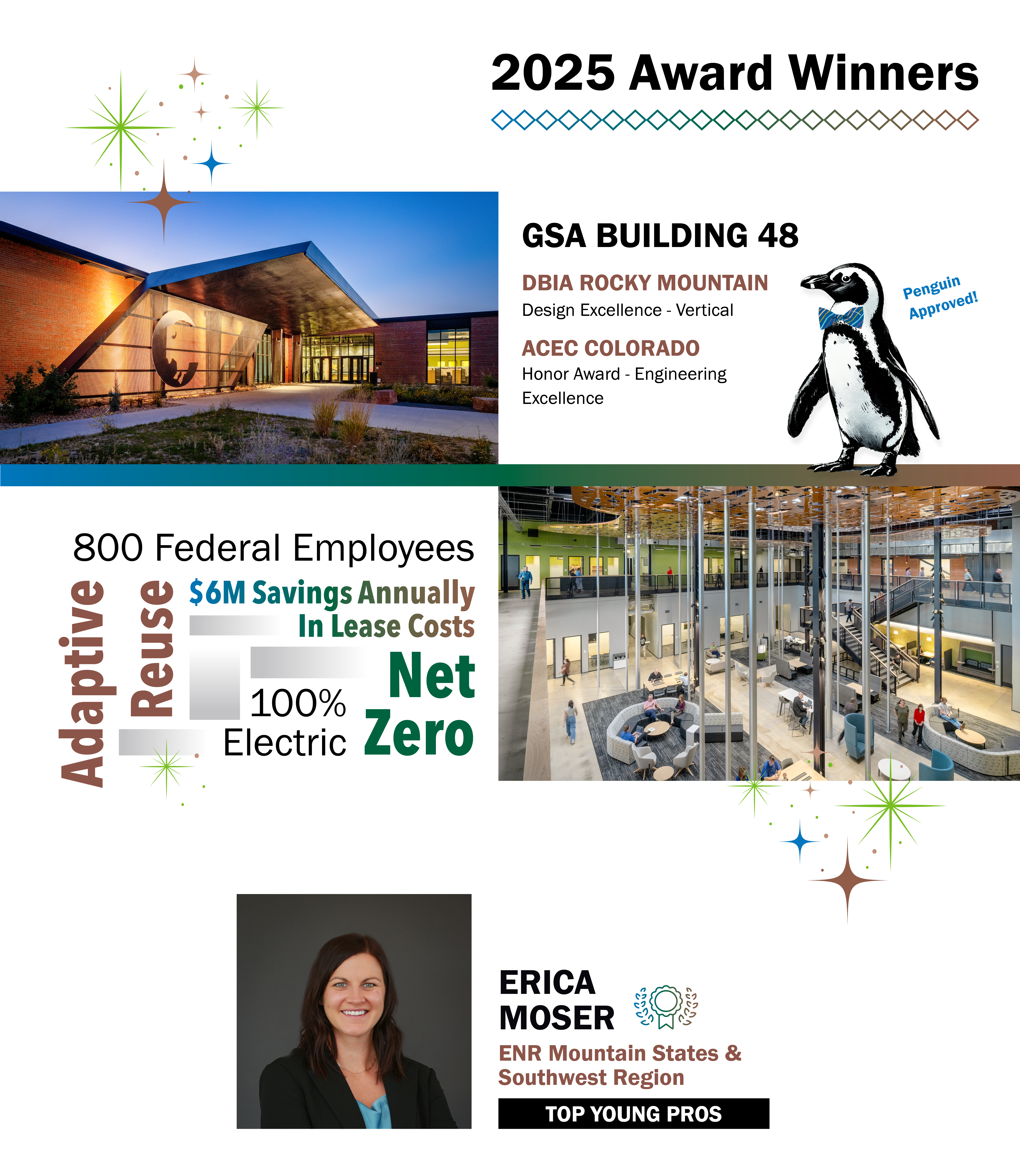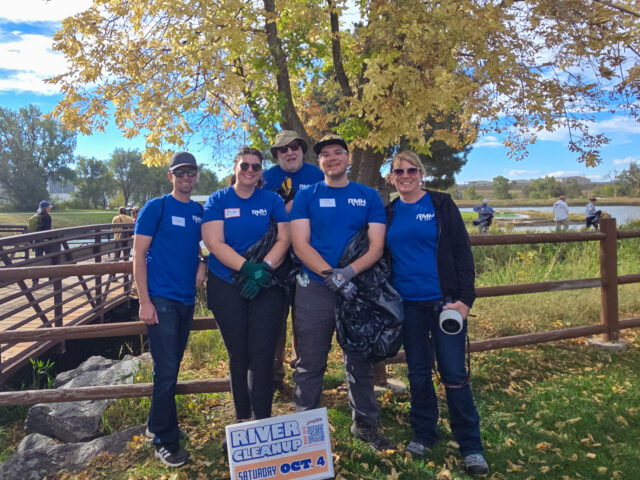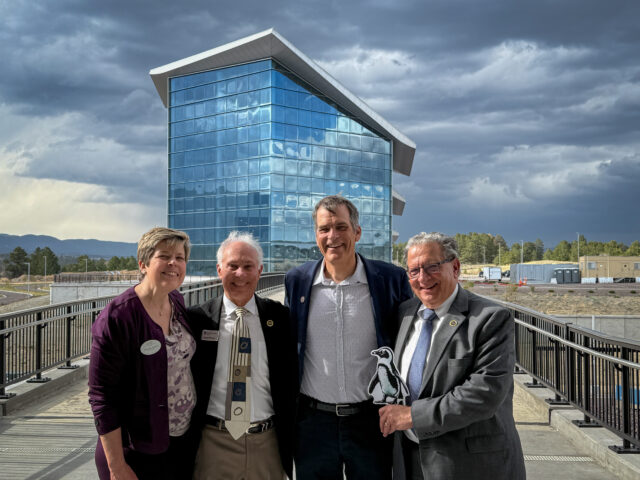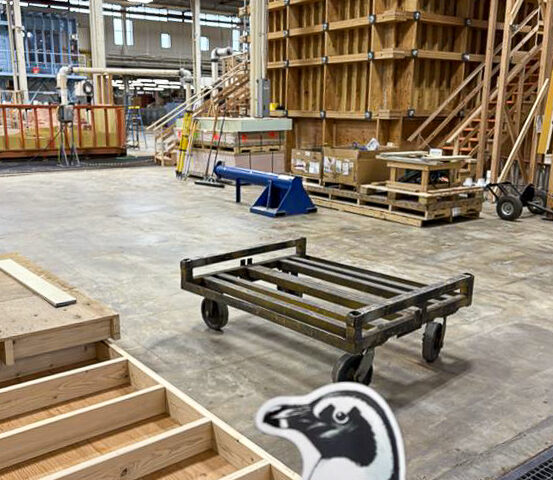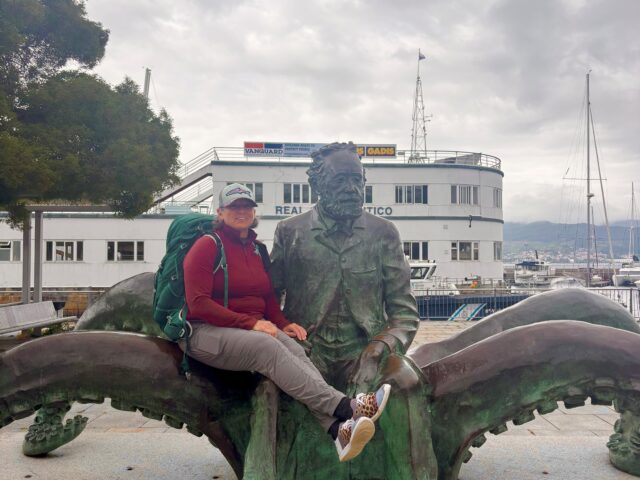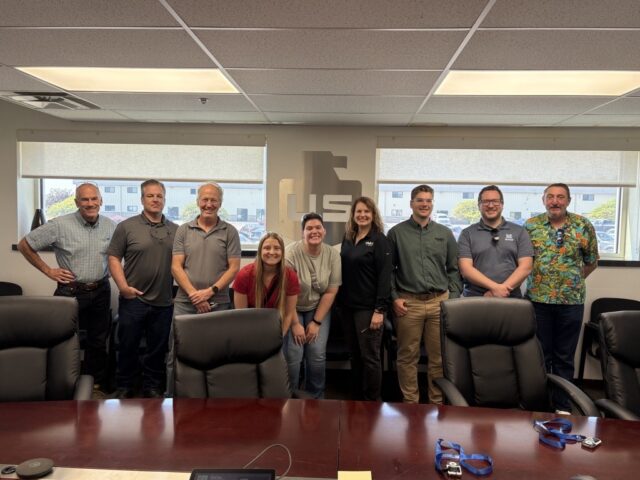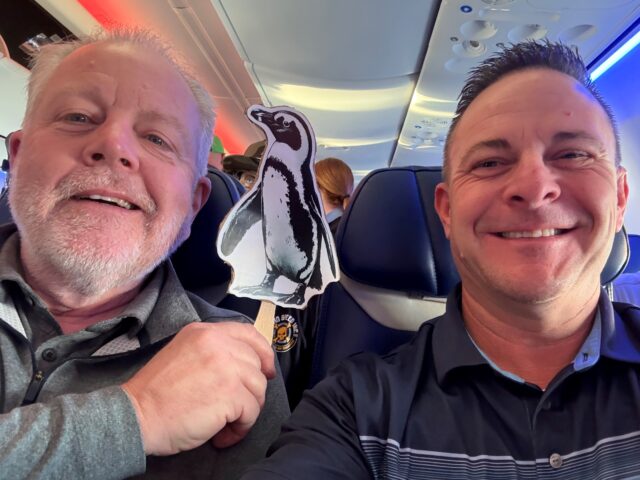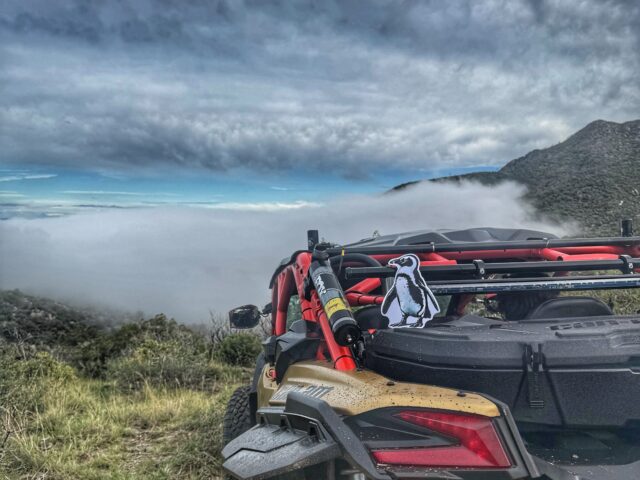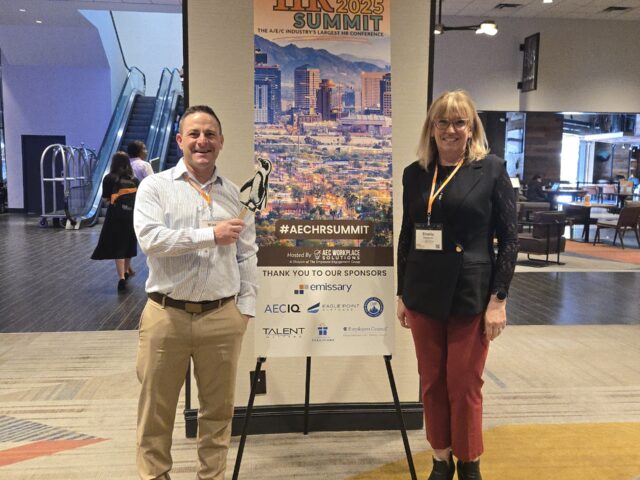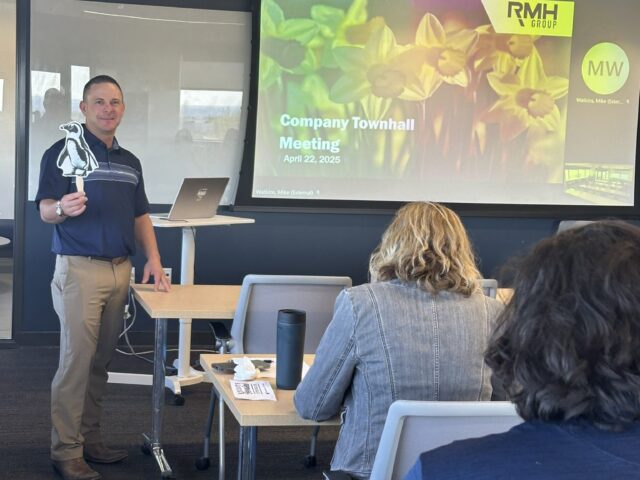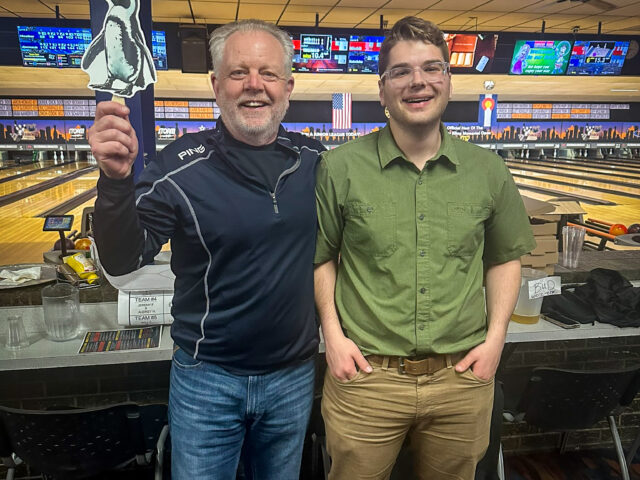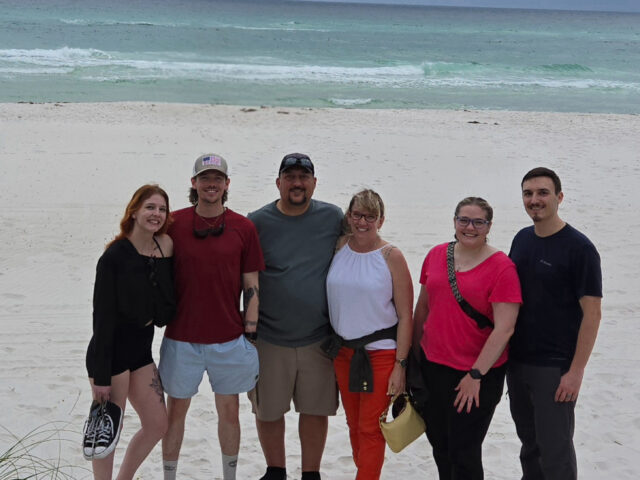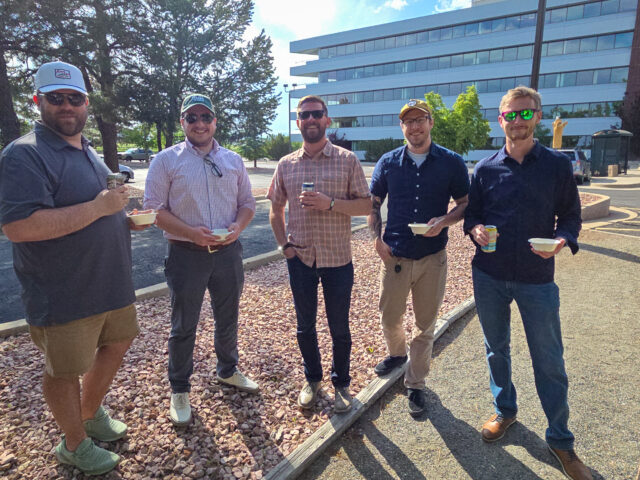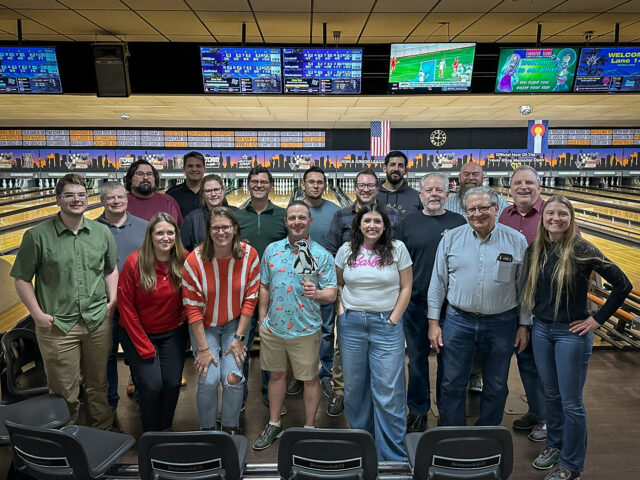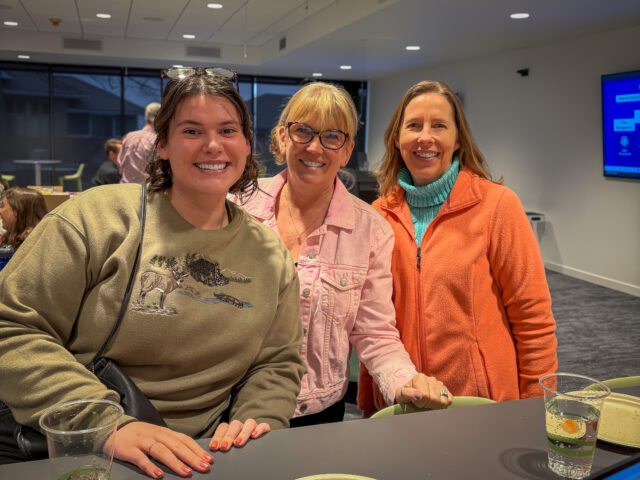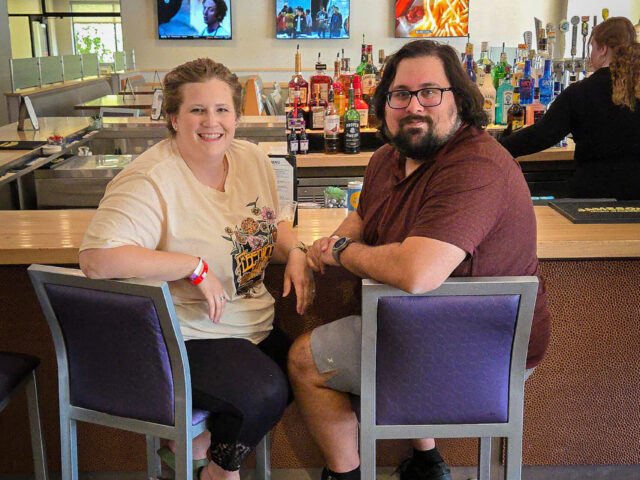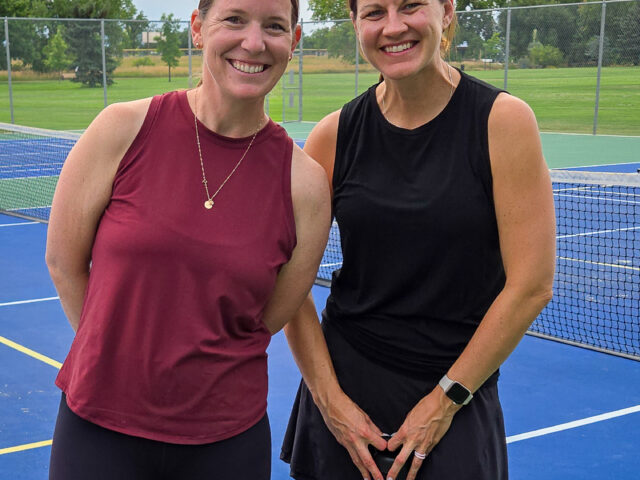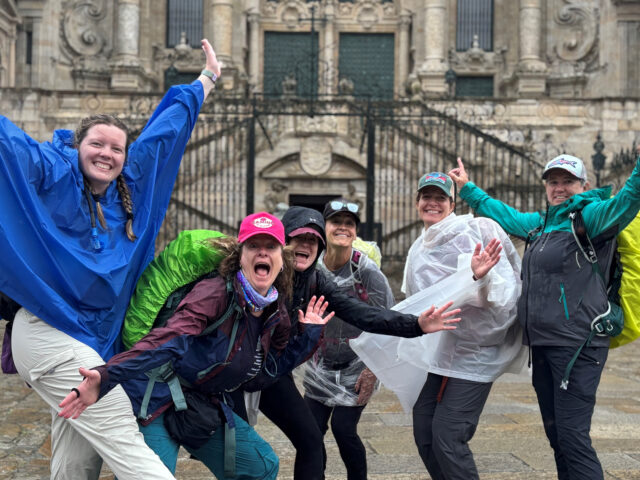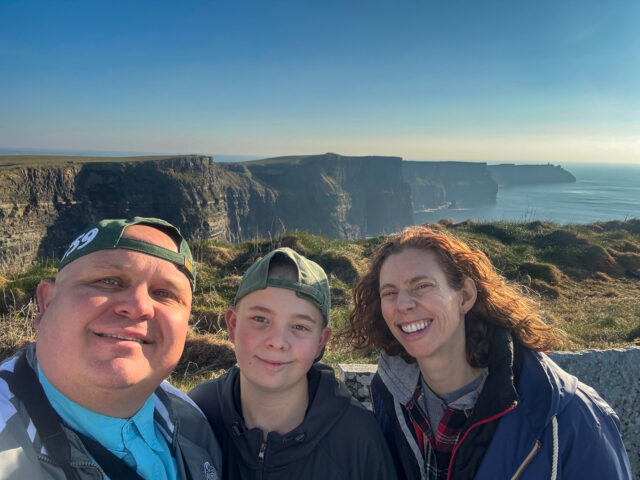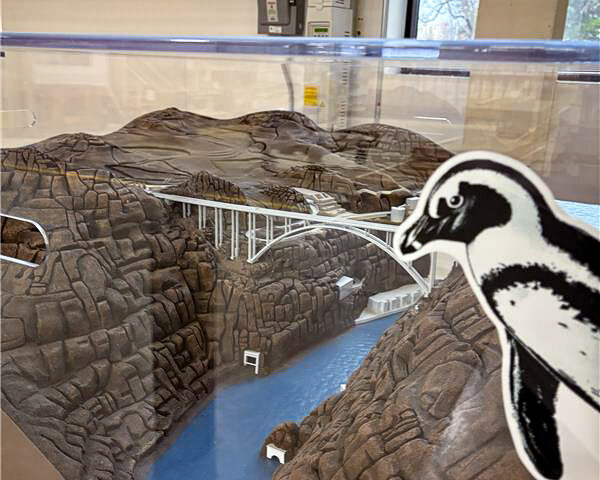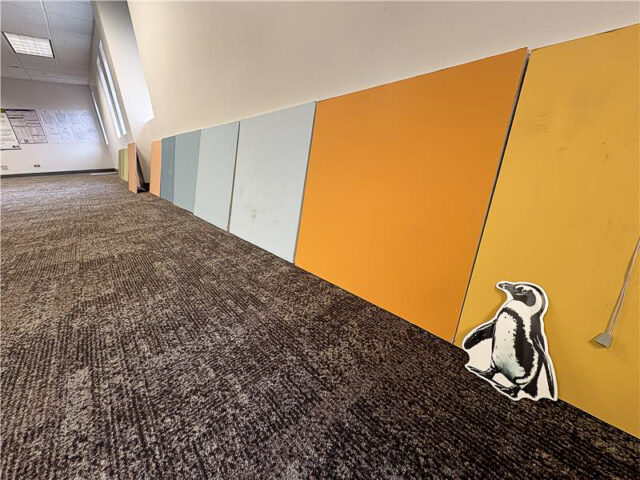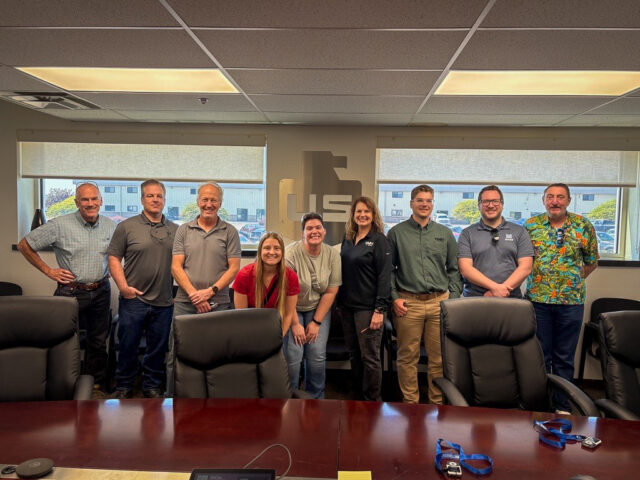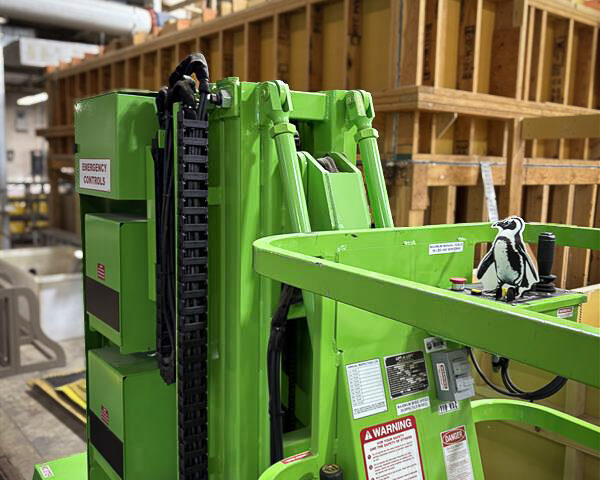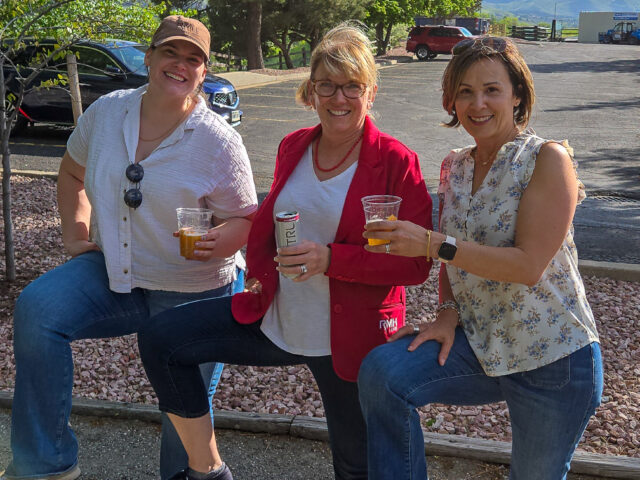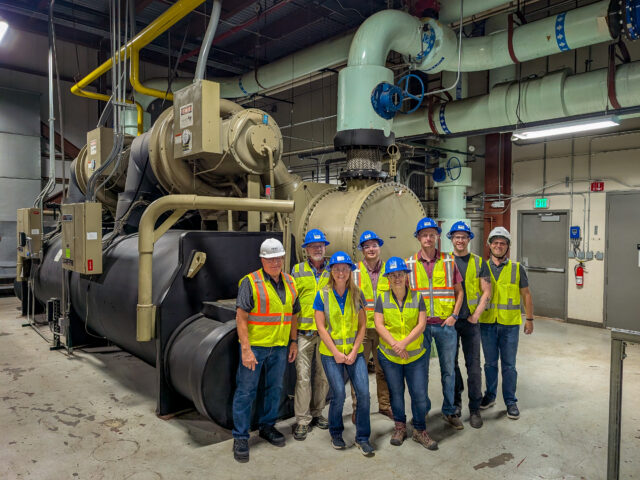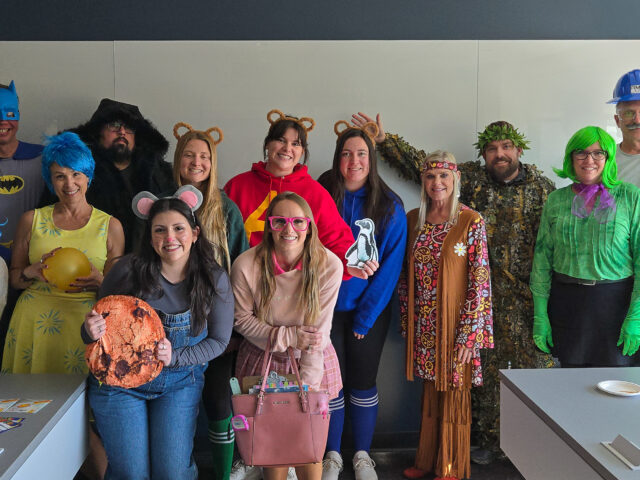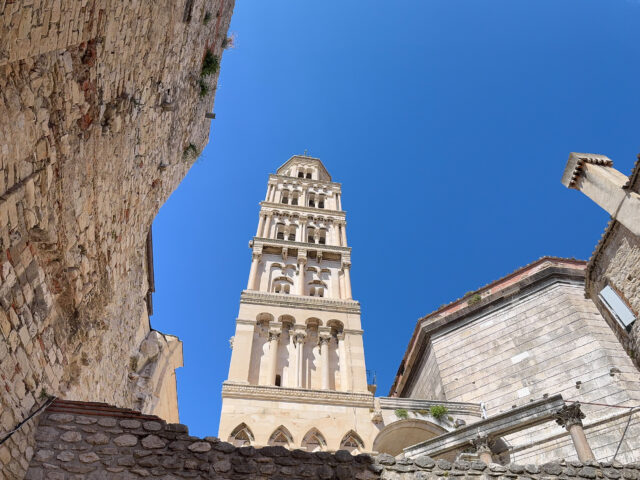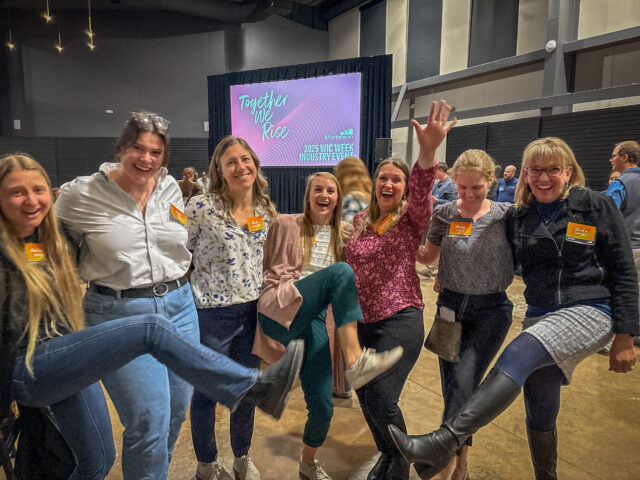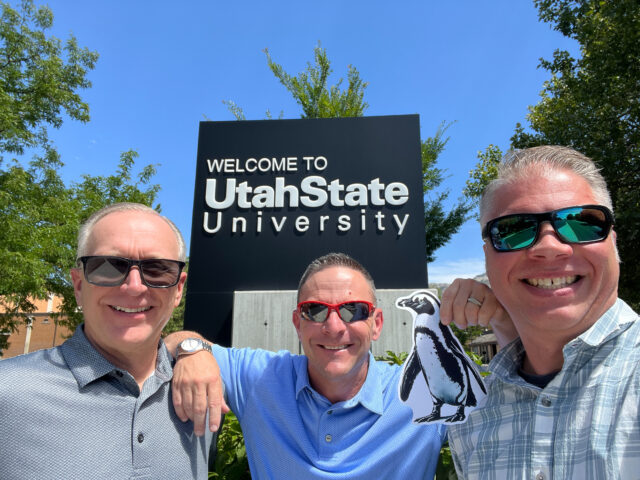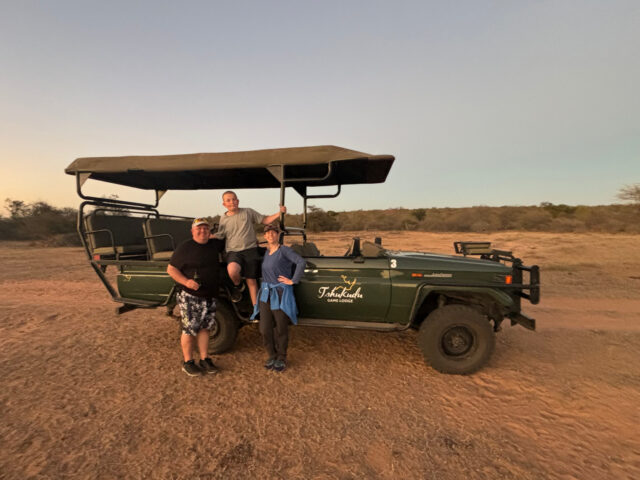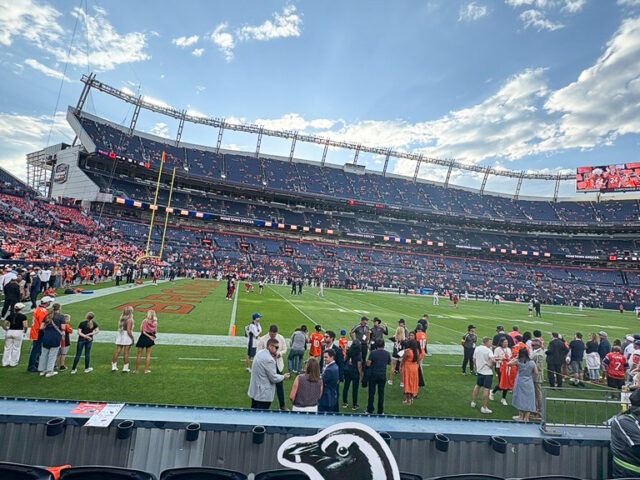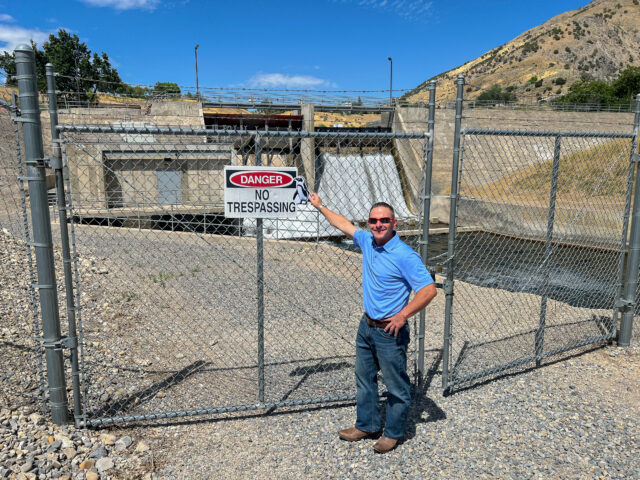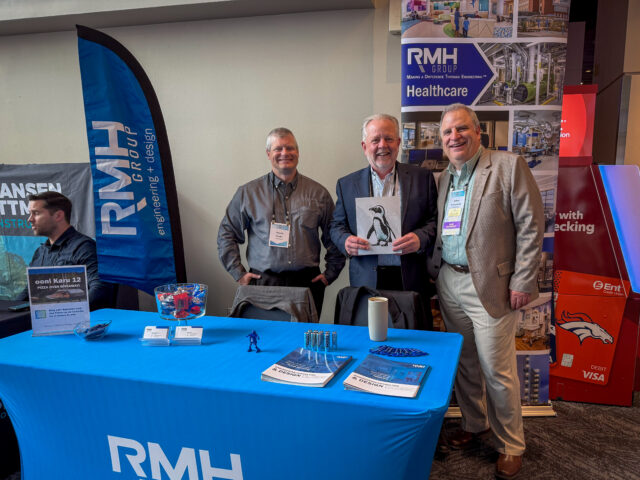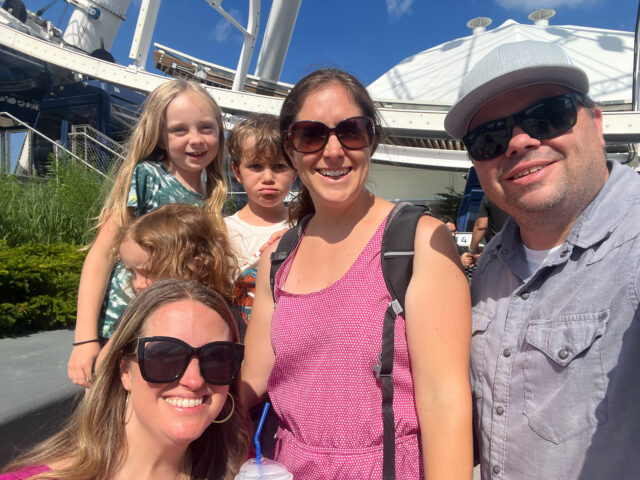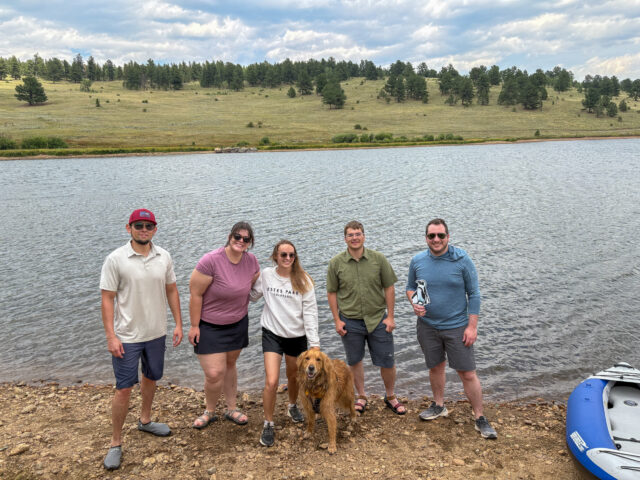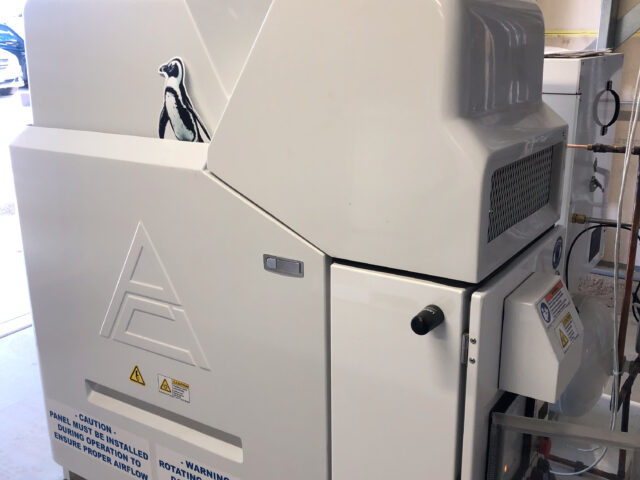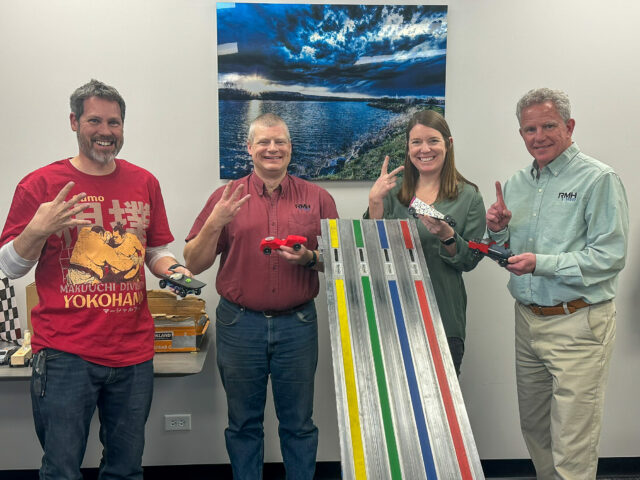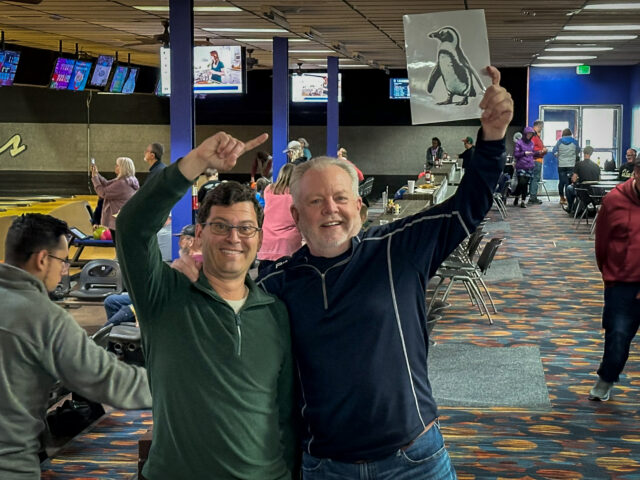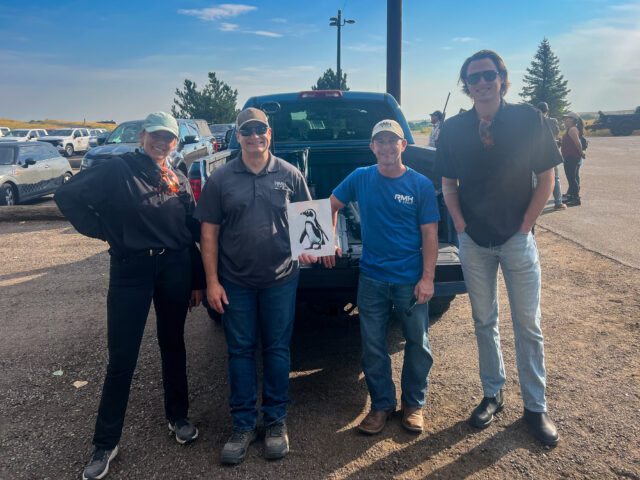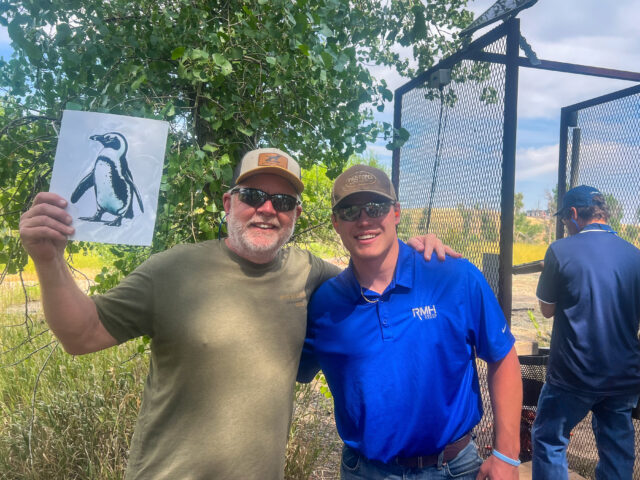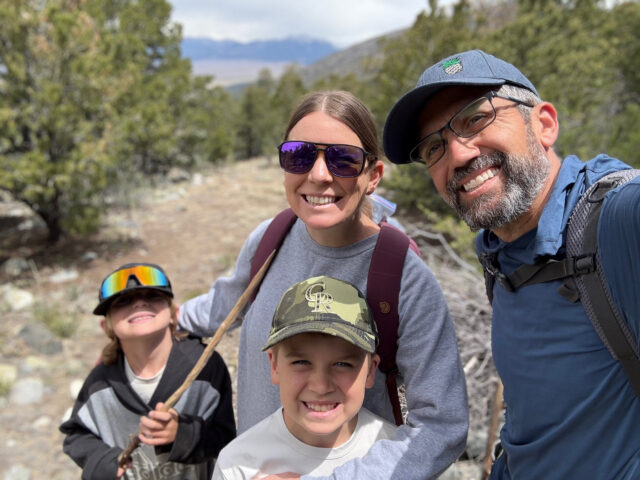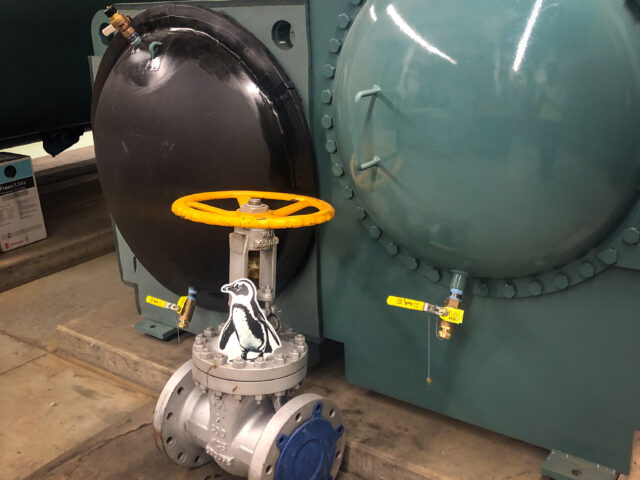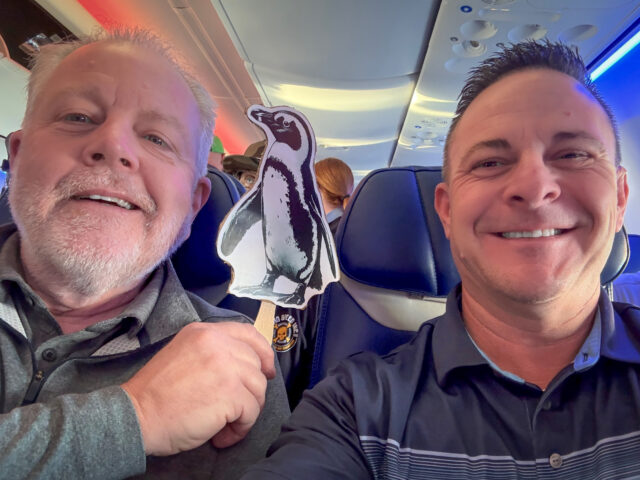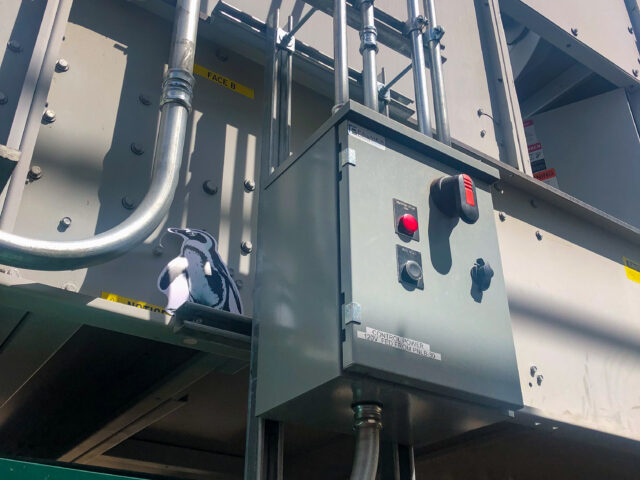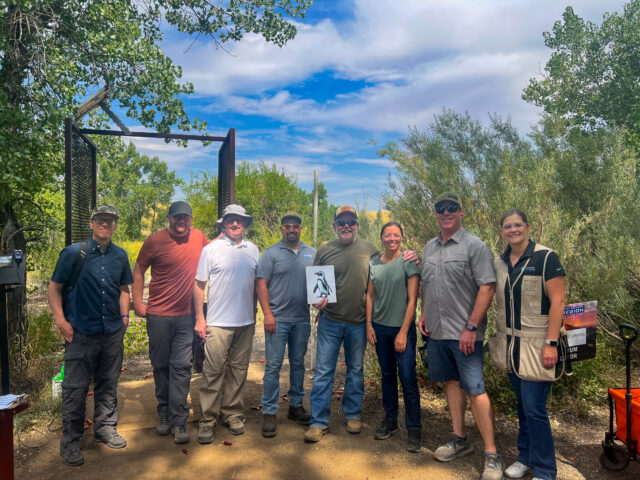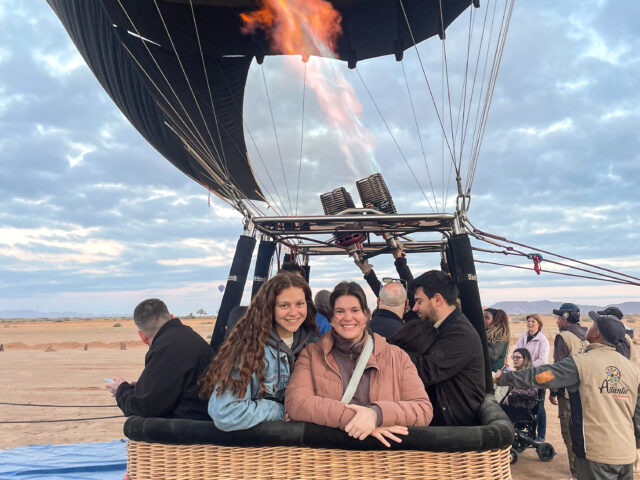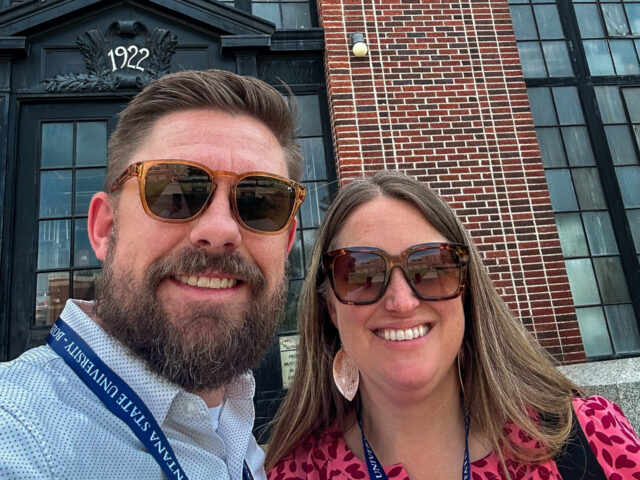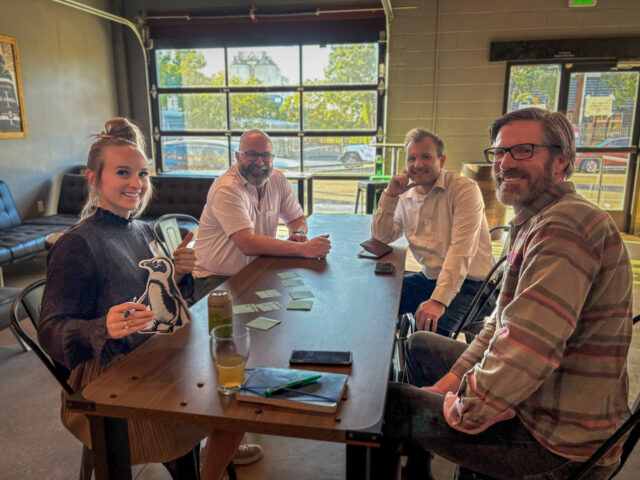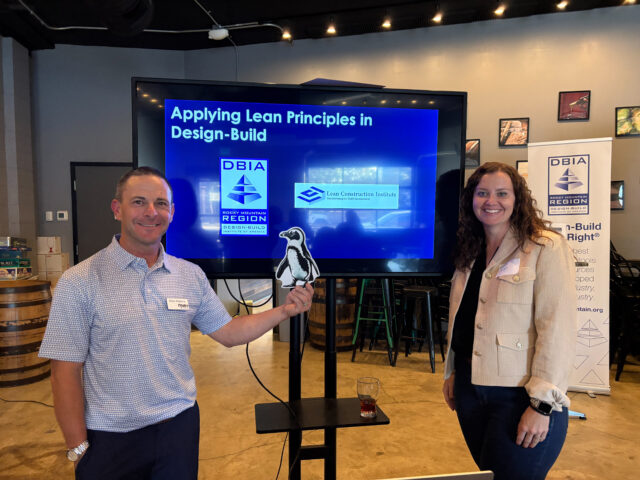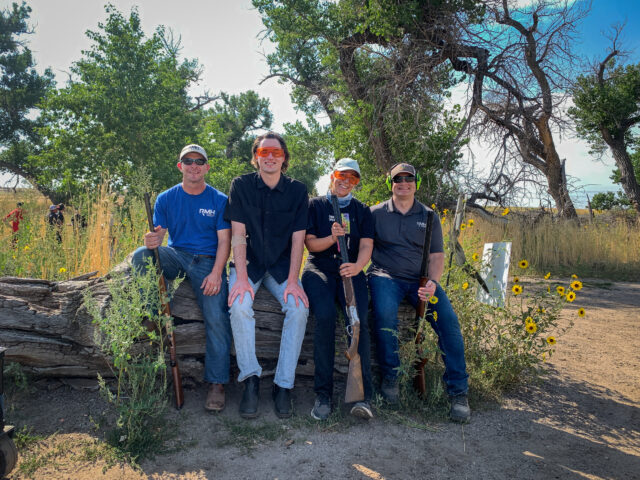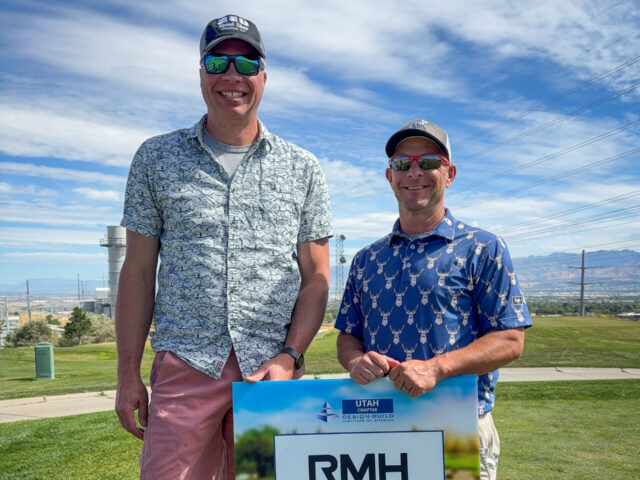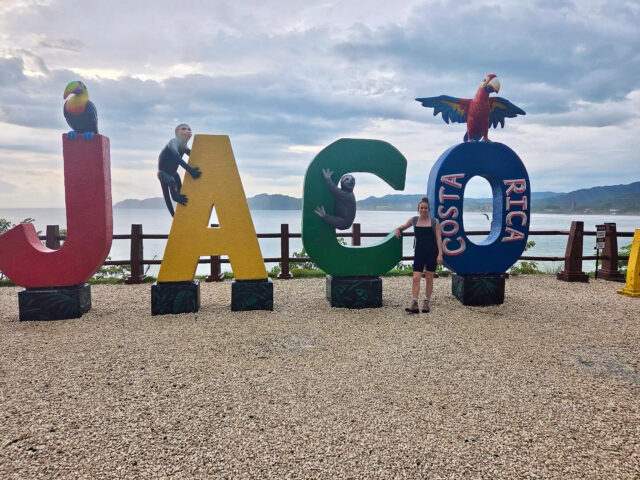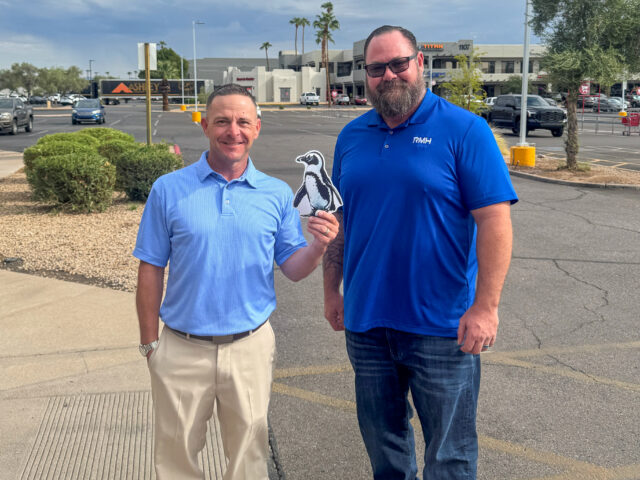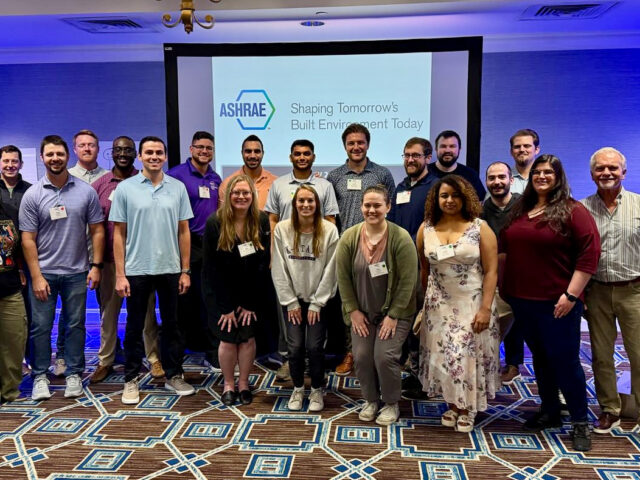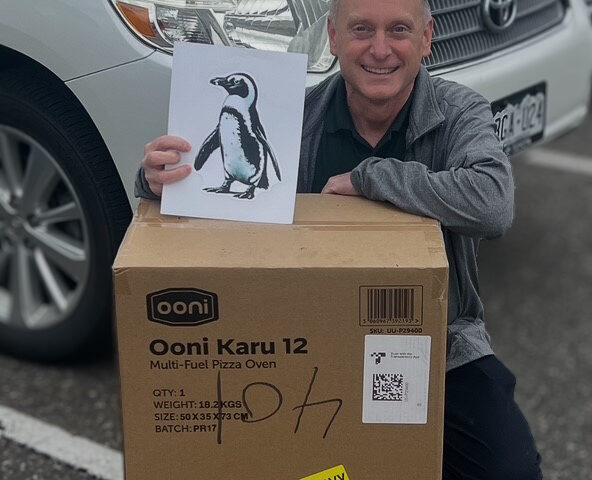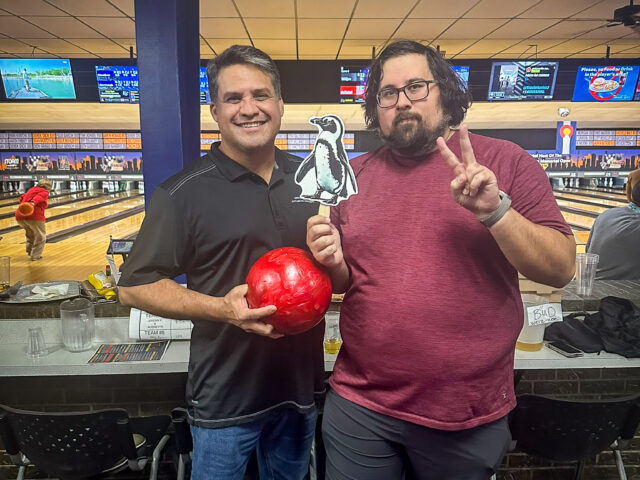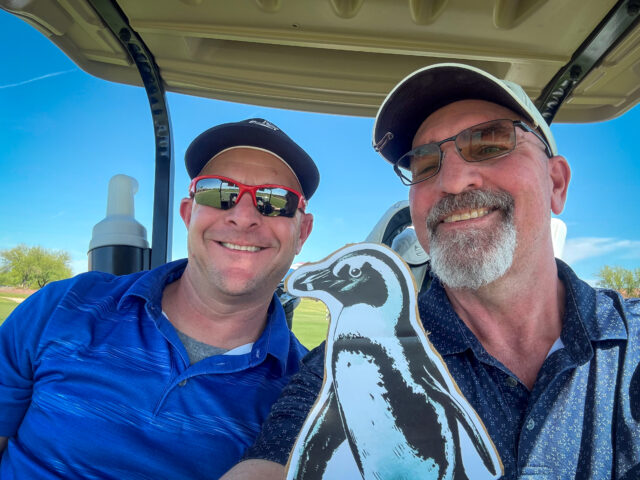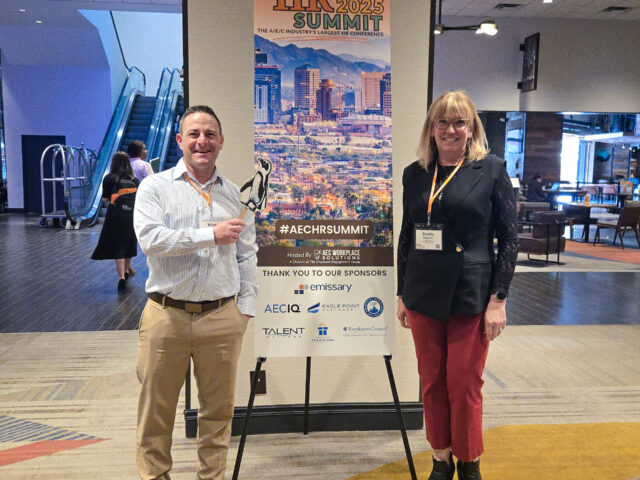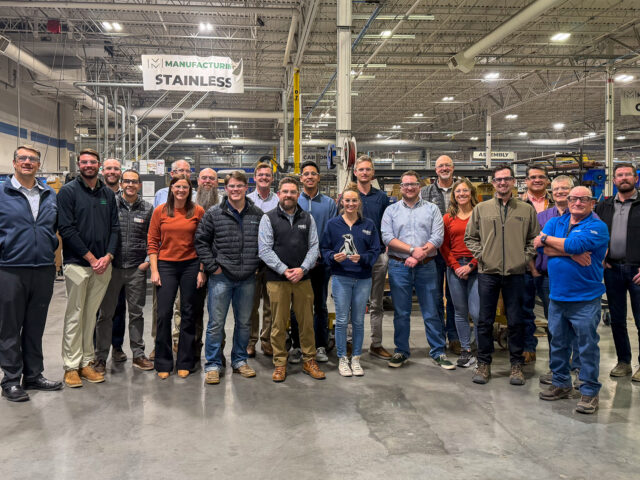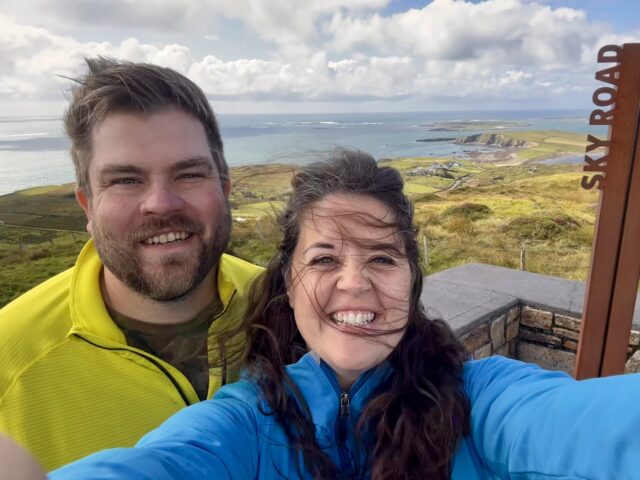At RMH, our long-term partnership with DEN has offered a front-row seat to the evolving challenges airports face: balancing rapid growth with sustainability, providing passenger comfort while modernizing aging systems, and planning infrastructure that must remain adaptable for decades to come.
Airports as Small Cities
The scale of DEN is hard to overstate. Covering approximately 34,000 acres, DEN covers more land than Manhattan and the city boundaries of Boston, Miami, and San Francisco. Like a city, the airport must manage critical systems such as energy, water, safety, technology, and transportation, all while serving millions of people every year. Unlike a city, however, it operates on an unforgiving 24/7 schedule with little room for error.
This reality shapes the way engineers approach design. Every building system, from HVAC to electrical to communications, must perform at scale and meet the diverse needs of terminals, concourses, security, loading gates, baggage handling, crew and maintenance facilities, lounges, secure communication rooms, and restaurants. These systems also require redundancy and backup power so that mission-critical operations never falter.
Retrofitting these systems in a non-stop airport environment poses challenges that are very different from those of new construction. As airports outgrow older central plants or stretch the capacity of existing systems, engineers must find ways to integrate new technologies without disrupting daily operations and maintaining energy consumption profiles. That balance of growth, adaptability, and resilience is a defining trend in aviation infrastructure today.
Engineering for Growth and Efficiency
Passenger volumes continue to rise at DEN and across the aviation industry. Meeting this demand requires more than additional square footage; it demands smarter, more efficient systems.
Airports are under pressure to electrify heating and cooling systems, reduce their reliance on fossil fuels, and prepare for emerging technologies such as microgrids and renewable energy integration. Cities like Denver are accelerating this shift through codes and regulations that drive toward higher efficiency and electrification. For engineers, this means designing building systems that strike a balance between sustainability, resilience, and grid capacity.
When people think about aviation and sustainability, the conversation often begins and ends with airplanes — which are undeniably large fossil-fuel systems. But what many don’t realize is that airports themselves are leading the charge in sustainable, electrified design. From energy-efficient central plants to electrified heating and cooling, airports like DEN are pioneering strategies that will define the future of resilient infrastructure.
Natasha Hernandez, Vice Principal and Aviation Market Leader
Increasingly, airports are also exploring bold alternative energy sources. As Denver International Airport announced in a 2025 article, it has issued an RFP to study the feasibility of a small modular nuclear reactor (SMR) as a potential clean baseload energy source. This underscores how airports must prepare not only for incremental upgrades in solar, wind, or battery systems, but also for entirely new energy paradigms that could transform their long-term infrastructure planning.
Each decision, whether for a control center relocation, an office expansion, or a concourse retrofit, becomes a case study in weighing cost, resilience, sustainability, and future readiness. Should a system maximize existing equipment for affordability? Should it prioritize cutting-edge electrification and energy recovery? Should it emphasize modularity to accommodate unknown future needs? These are the kinds of trade-offs that define the future of aviation facilities.
Lessons from the Field
Working at DEN highlights several broader lessons that apply to airports—and large-scale facilities—everywhere:
- Flexibility is essential. That means designing automation and control systems that are scalable, adaptable, and future-ready. Airports increasingly rely on integrated platforms that connect HVAC, lighting, and communications across vast campuses. For these systems to remain effective, they must allow for modular expansion, seamless retrofits, and quick adoption of new technologies as they emerge, including potentially transformative energy sources like SMRs or hydrogen,
- Sustainability and resilience go hand in hand. Energy-efficient systems, central utility plant upgrades, electrified heating, and controls upgrades are as much about long-term operational resilience as they are about environmental goals. As DEN’s recent alternative energy initiative demonstrates, sustainability now means thinking beyond renewables and considering how clean baseload power, microgrid readiness, and grid resilience can be combined to support future passenger growth.
- People remain at the center. Infrastructure ultimately serves human comfort, safety, and productivity. Today, that extends beyond temperature control to measurable design factors, such as indoor air quality, acoustics, and circadian lighting.
Designing building systems for airports is about more than comfort; it’s about resilience, adaptability, and efficiency at a scale few other facilities demand. Every system, from HVAC to communications, must be expandable and integrated so that new technologies can be layered in without disrupting operations. At DEN, we’ve seen firsthand how flexible, future-ready systems are essential to meeting both today’s needs and tomorrow’s demands.
Phil Shane, Mechanical Engineer
Designing for People, Planning for the Future
At RMH, we view every project at DEN as more than an upgrade; it’s an investment in Colorado’s identity and in the future of aviation. Airports shape first impressions, drive local economies, and connect communities across the globe.
The future will demand even more ambitious strategies. Airports are preparing for electric aircraft, hydrogen fueling, autonomous ground support equipment, and now, potentially on-site clean power generation through nuclear or other advanced technologies. Infrastructure must keep pace. By helping DEN modernize, expand, and operate more efficiently, we’re not just designing building systems. We’re helping chart the path for airports of the future: places that are sustainable, resilient, and designed with people in mind.
Aurora, one of Colorado’s fastest-growing cities, is projected to see its population rise by nearly 40 percent by 2050. In anticipation of this growth, the City of Aurora developed its first Public Safety Facilities Master Plan. This 25-year, $1.5 billion initiative outlines a comprehensive strategy to upgrade and expand infrastructure for the police, fire, and Aurora911 departments.
However, a plan of this magnitude requires more than just new buildings. It requires a long-term vision for how facilities will operate, evolve, and remain dependable for decades.
This is where the collaboration between the City, Roth Sheppard, and The RMH Group became critical. Architects shape civic identity by designing fire stations that blend into neighborhoods, support first responders, and reflect community values. Engineers, meanwhile, deliver the systems that keep those stations functioning in all conditions.
RMH served as the mechanical, electrical, and plumbing (MEP) engineering consultant and was pivotal in assessing the condition of existing systems and charting a path toward facilities that are both modern and resilient. The team conducted detailed evaluations of existing public safety buildings and uncovered several critical issues. These included aging HVAC systems, inefficient electrical distribution, code compliance gaps, and limited backup power capacity. Each of these deficiencies posed risks to operational continuity and increased long-term maintenance costs.
Beyond identifying problems, RMH developed basis-of-design criteria to guide future renovations and new construction. The firm recommended clean air handling systems for fire stations and designed redundant power solutions for dispatch centers. These strategies were developed to enhance performance and safeguard emergency operations from disruption.
RMH also contributed to Aurora’s IT Infrastructure Resiliency Plan. In today’s environment, uninterrupted communication is just as essential as lighting or fire suppression. The firm’s input helped strengthen the city’s ability to respond swiftly and reliably in critical situations.
The result is more than a facilities plan. It is a framework for resilience. By combining Roth Sheppard’s architectural insight with RMH’s engineering expertise, Aurora has laid the foundation for a public safety infrastructure that can grow with the city, withstand disruption, and serve the community for generations.
Leading the charge are top-tier programs at the University of Colorado Boulder (CU Boulder), the Colorado School of Mines, and CU Anschutz, alongside a regional consortium led by Elevate Quantum. Designated a Tech Hub by the U.S. Economic Development Administration¹, Elevate Quantum is working to accelerate quantum technology commercialization by strengthening ties between academic institutions, private industry, and federal partners. Colorado’s robust scientific ecosystem actively supports this initiative, featuring national labs such as NREL and NIST, as well as more than 40 federally funded research entities across the state.
The Elevate Quantum Model prioritizes workforce development by implementing a comprehensive strategy that spans from K–12 STEM engagement to higher education and industry-aligned training and career development. This multi-tiered approach aims to cultivate a homegrown quantum workforce by exposing students to quantum concepts early and offering pathways through technical colleges, universities, and on-the-job training programs.²
With over $114 million in public funding, including state tax incentives and targeted regional support, and an expected private investment between $1 billion and $2 billion, Colorado is positioning itself to lead the country in quantum research and talent development. More than 3,000 quantum-related jobs already exist in the state, with projections for continued growth of up to 10,000 as demand for skilled talent and high-performance research environments increases.3
However, in order to fully realize this potential, institutions must evolve their physical campuses. Engineering firms are uniquely positioned to guide these transformations, establishing the right infrastructure to support the highly specialized demands of quantum science.
The Infrastructure Demands of Quantum Technology
Quantum technologies, particularly quantum computing, sensing, and communications, require environments far more controlled than those used in conventional research labs. Key facility needs include:
- Cryogenic systems and ultra-low temperature environments: Quantum systems often rely on superconducting qubits or trapped ions, both of which require environments cooled to near absolute zero.4 These systems not only need a significant amount of electricity and cooling water but also require a vibration-isolated infrastructure, extensive helium or dilution refrigeration systems, and enhanced ventilation and safety protocols.
- Electromagnetic shielding: Even minute electromagnetic interference (EMI) can disrupt quantum coherence. Shielded rooms and Faraday cages, integrated into lab designs and building envelopes, are critical to minimizing noise.5
- Vibration isolation and acoustic damping: Quantum labs require low-vibration environments to ensure experimental stability and precision. This often involves the use of isolation pads, floating floor systems, and specialized HVAC design.6
- Cleanrooms and particle control: Certain quantum hardware components are fabricated in Class 100–1000 cleanroom environments, requiring precision air filtration, pressure zoning, and strict control of contaminants.
- High-density computing and cooling: Quantum labs interface with classical high-performance computing (HPC) systems, demanding robust data infrastructure and advanced thermal management systems.7
A Colorado Roadmap: Higher Education Leading the Way
Institutions across Colorado are actively investing in infrastructure to support this new frontier. At CU Boulder, the new space for the Quantum Engineering Initiative Lab within the College of Engineering and Applied Science, along with the campuswide Cubit Quantum Initiative, demonstrates a commitment to enabling cutting-edge quantum research.8 Similarly, the CU Anschutz Medical Campus is prioritizing infrastructure flexibility and energy resilience through its Energy Master Plan, designed to accommodate next-generation research needs.9
Elsewhere, the Auraria Campus and Colorado School of Mines are aligning facilities planning with quantum-readiness goals. Engineering assessments, clean energy upgrades, and strategic STEM space programming are helping lay the groundwork for advanced research.10
At RMH Group, we’ve had the privilege of supporting energy master planning and infrastructure design across many of these campuses. Our work on the CU Boulder Geothermal Study, for example, helps position the university to meet precision temperature requirements for sensitive labs while also achieving its carbon reduction goals. Most recently, we provided engineering services for a new laboratory on the Auraria Campus designed to support advanced research in quantum computing and physics, further underscoring the region’s growing role in the quantum ecosystem.
The Role of Engineering: Future-Ready Campuses
As Colorado institutions advance their quantum initiatives, collaboration between academic leadership, researchers, and engineering teams will be essential. Engineering firms can add strategic value by:
- Designing modular, future-proof labs: Anticipating how labs may evolve as quantum tech advances help institutions avoid costly retrofits.
- Integrating sustainable energy systems: Solutions like geothermal exchange and advanced controls ensure operational stability while reducing long-term costs.
- Aligning infrastructure with available funding pathways: Understanding and leveraging state and regional incentives for clean energy and STEM facility upgrades can help finance these complex capital projects.
Conclusion
Quantum technology isn’t just a new research focus—it’s a paradigm shift that demands a new kind of campus. With the right infrastructure, Colorado’s higher education institutions can lead the world in this emerging domain. Engineering firms that understand the nuances of quantum science can become key partners in this transformation, helping to build not only stronger labs but smarter, more resilient campuses ready for the future.
References
- US. Economic Development Administration. (2023). 2023 Tech Hubs Designees and Strategy Development Grant Recipients
- Elevate Quantum. (2024). Elevate Quantum Awarded \$127 Million
- The Sum & Substance. (2024). Colorado Lands Coveted Tech Hub Designation to Boost Quantum Sector
- National Academies of Sciences, Engineering, and Medicine. (2019). Quantum Computing: Progress and Prospects
- Quibit Components. Electromagnetic Shielding: Defending Quantum Systems from the Outside World
- TMC Vibration Control. (2024). Quantum Computers: The Importance of Vibration Isolation
- Cornell University, Quantum Physics (2025). Hardware-level Interfaces for Hybrid Quantum-Classical Computing Systems
- University of Colorado Boulder. (2023). Leadership Highlights Investment and Momentum for Collaboration, New Projects at Quantum Engineering Lab Ribbon Cutting
- University of Colorado Denver | Anschutz Medical Campus. (2025). Energy Master Plan
- Colorado School of Mines. (2025). Quantum Engineering
The journey began with a bold vision. RMH was first selected to provide mechanical and electrical engineering design for a 70,000-square-foot research and development facility for WhiteWave Foods, now part of Danone, one of the world’s largest food and beverage companies. Designed to foster innovation, the facility included a pilot plant, quality assurance and product testing laboratories, a culinary kitchen with a sensory lab, open and private offices, and conference rooms. From day one, RMH brought deep technical knowledge and close coordination to support the client’s mission of advancing nutrition and sustainability through science.
Years later, as the pandemic reshaped how and where people work, Danone’s needs shifted. They no longer required a traditional office environment. Instead, they needed a flexible workplace that could support a hybrid workforce and promote collaboration.
RMH received a call and got to work.
RMH was in a unique position to provide assistance. With original building plans on file, institutional knowledge of the facility, and a project team already familiar with the systems and stakeholders, RMH was ready to deliver a seamless renovation process that respected both timeline and technical complexity.
Danone aimed to consolidate two separate offices into a unified 40,000-square-foot building without disrupting the critical work of its Research & Innovation team. RMH’s engineers worked closely with Danone and trade partners to maintain uninterrupted lab operations while executing design solutions that transformed the office environment into a collaborative free-address concept.
The engineering scope encompassed comprehensive demolition design, reconfiguration of HVAC and electrical systems, and upgrades to lighting, controls, and fire protection. RMH’s electrical team delivered new power distribution for collaborative spaces, a coffee bar, and computer equipment. Mechanical engineers rebalanced airflows, modified hydronic piping, and adapted DDC controls to support the flexible new layout. The team also ensured that all systems met the latest local code requirements for energy performance and life safety.
By combining legacy knowledge with fresh thinking, RMH delivered a tailored solution that aligned with Danone’s evolving culture without missing a beat.
It’s a story of continuity. Of responsiveness. And of what’s possible when engineering and trust go hand in hand to address tomorrow’s challenges with the same dedication and excellence that have defined our journey so far.
The Backbone of Healthcare: Smart MEP Design through Collaboration
The clinic’s design reflects a growing trend in healthcare toward specialized outpatient care, where targeted therapies can improve patient outcomes and experiences. Our approach to MEP design is enhanced by extensive collaboration, studies, and field investigations, which enabled us to assess existing systems and pinpoint improvements for a smooth transition into the new space.
We conducted a heating, ventilating, cooling, and power load analysis and confirmed that the two rooftop units (RTUs) serving the second and third floors, along with the electrical panel, were sufficiently sized to support the planned expansions, including the installation of two x-ray machines and a C-Arm. This careful analysis minimized unexpected costs and design changes, resulting in a high-performance environment that supports effective healing and recovery.
Additionally, RMH collaborated with stakeholders to reconfigure the base building’s HVAC systems, enhancing tenant control and aligning our approach with the planned construction for the Cancer Center on the Garden Level and Level 3. By fostering open communication and teamwork, we adapted our strategies to effectively split the design packages, even at a late stage of the process. This flexibility allowed us to navigate project phasing smoothly while maintaining our commitment to quality throughout the design phase.
A Model for Future Healthcare Engineering
The Castle Rock Muscular Skeletal Gym and Clinic exemplifies how effective collaboration between the client, architecture team, and MEP engineers yields a facility designed with patient needs and experiences at its core. The insights derived from working closely with the AdventHealth leadership team addressed their unique challenges and needs, leading to functional and healing spaces.
As we look to the future, it is clear that successful healthcare engineering will depend heavily on collaborative efforts that include proactive planning. By fostering a patient-centered design philosophy and working hand-in-hand with clients, we have the ability to develop healthcare facilities that not only exceed performance expectations but also create nurturing environments that promote healing and wellness. The collaboration and understanding gleaned from the Castle Rock project will undoubtedly set new benchmarks for excellence in future healthcare environments.
An architectural marvel stands at the North Gate of the U.S. Air Force Academy in Colorado Springs – the USAFA Hosmer Visitor Center. This 34,000-square-foot facility, nestled within the extensive TrueNorth Commons development, plays a crucial role in the region’s educational and economic landscape.
Innovative Design
The Air Force Thunderbirds architecturally inspire the Hosmer Visitor Center. Its four-winged roof design mirrors the expansive profiles of a Lockheed F-117A Nighthawk, the largest delta-wing aircraft. The design symbolizes the Academy’s four-class progression from the fourth to the first year. A critical requirement for the project was maintaining the sleek image of winged aircraft, ensuring no penetrations through the metal panel roof system. Typically, buildings have vents and mechanical equipment on their roofs, which would disrupt this aerodynamic aesthetic. RMH Group devised a solution where all mechanical systems and vents route through the sides of the building. Louvers and vents strategically allow the mechanical intake and exhaust systems to pass through the building’s less visible back side below the third roof’s trailing edge without compromising the roof’s appearance, preserving the visual integrity of the Delta-wing design.
The Visitor Center will be an iconic architectural marvel, following the footsteps of the Cadet Chapel. One of the most striking features of this building is its 80-foot-tall south-facing atrium, with views of the Academy and Pikes Peak. However, this design posed a challenge: effectively cooling the atrium while mitigating cold drafts experienced during winter. To tackle this challenge, RMH Group designed an innovative radiant-slab cooling system. This system stands out because it can capture radiant energy from solar gain before it can re-radiate to other parts of the building. The radiant space conditioning system circulates chilled water through tubing circuits embedded within the building’s floor. The floor functions as a heat sink, providing efficient cooling to the space and its occupants. Additionally, displacement ventilation and fin-tube radiation sweep the atrium glass. This setup helps control conduction heat from the glass, carries it away before it can enter the space, and prevents cold drafts during the winter. These systems maximize energy efficiency and provide high thermal comfort and heating performance. To enhance the dynamic sense of movement the tiered roof wings create, the luminaries are strategically positioned to accentuate the building’s form without detracting from its aesthetic. The luminaries highlight the design elements and provide a safe and secure atmosphere for visitors.
Community Impact
As part of the City for Champions Initiative, this project is instrumental in uplifting the region’s quality of life and aligns with the Air Force Academy Foundation’s goals and the broader development of TrueNorth Commons, which includes commercial spaces, retail establishments, and the 375-room Hotel Polaris. The Hosmer Visitor Center is anticipated to attract over 1M visitors annually, contributing to a projected boost in the local economy of $4.4M in new annual sales tax revenue. By creating jobs and supporting local businesses, the project fosters community pride and enhances public welfare.
As an educational platform, the Hosmer Visitor Center will include high-tech exhibits and experiential storytelling that illustrate the role of engineering in modern life and military operations. From virtual reality experiences to detailed depictions of cadet life from arrival at the Academy to graduation, the center aims to inspire future generations and enhance public awareness of the Air Force mission.
The Hosmer Visitor Center exemplifies the culmination of engineering excellence through its innovative design, sustainable practices, and significant social and economic contributions. As a transformative social institute, educational platform, and economic catalyst, it showcases the ingenuity and capabilities of The RMH Group and its partners by addressing complex challenges with innovative engineering solutions.
Congratulations to the Entire Project Team:
- General Contractor: G.E. Johnson
- Architect: Fentress Architects
- MEP Engineering: The RMH Group
- Civil Engineering & Landscaping Design: Matrix Design Group
- Structural Engineering: Martin/Martin
- Life Safety: Wiss, Janney, Elstner Associates, Inc.
- Exhibit Design: Nasco | Gallagher & Associates
Located in Broomfield, Colorado, the Children’s Hospital Colorado North Expansion project responded to the growing healthcare needs of families in Northern Colorado and Southern Wyoming. The strategy devised by the design-build team was a substantial greenfield expansion of the current 47,000-square-foot multi-specialty clinic, urgent care, and surgery center. This metamorphosed into a 236,000-square-foot pediatric hospital, with over 120,000 square feet dedicated to multi-specialty outpatient care. The facility provides a comprehensive range of services for families including pediatric orthopedics and sports medicine, cancer services, behavioral health services, ophthalmology, neurology, cardiology, ENT, urology, dentistry, and more, all under one roof.
In addition to the new five story medical office building and outpatient clinic, the project also included expanded urgent and emergency care, 24 inpatient beds, a sleep study lab, community educational programs, sterile processing, a pharmacy, a laboratory and new nutrition services for patients and families. To serve this building expansion and future expansions, work included an addition to the central utility plant and corresponding infrastructure services.
The RMH Group provided full-service mechanical, electrical, and plumbing engineering for the project. This covered designing the specialized heating, ventilation, air conditioning, medical gas, building automation, energy code compliance, plumbing, electrical service, regular and standby power distribution, power provision for mechanical and hospital equipment, lighting, and specification of fire protection and suppression systems.
Integrated Project Delivery: A Collaborative Success
The project team was driven by the singular goal of providing Children’s Hospital a solution that would accommodate their growing needs while remaining fully operational and concluded that the Integrated Project Delivery (IPD) approach would be ideal for the project. The IPD model enabled the team to share both risks and rewards, ensuring a “project first” mindset that drove innovation and teamwork. Working in a shared workspace, the co-located team was instrumental in maintaining open communication and preventing the siloing often seen in traditional construction projects.
Innovative Solutions and Overcoming Challenges
The design-build team leveraged groundbreaking engineering aspects to inject unique innovations into the project. Key among these are wireless lighting controls, which enhance flexibility and control of the lighting system, contributing to energy efficiency and comfort for staff and patients.
The team also incorporated an innovative power generation technology involving on-board paralleling of standby power generators. This relatively new technology, harnessed by only one other hospital in Colorado, replaces the traditional paralleling switch gear. The result is a boost in power supply reliability and significant savings in money and space within the facility.
Beyond these, the team implemented two different substation feeds from the utility provider to ensure a redundant power supply to the facility. This added layer of security guarantees an uninterrupted power supply, guaranteeing the hospital’s ability to provide continuous care, even during a power outage.
RMH prioritized delivering high-quality, energy-efficient MEP systems aligned with the project’s objectives while ensuring financial responsibility for initial and operational expenses. Collaboration between the design-build team and the Children’s Hospital staff led to a facility achieving an Energy Use Intensity (EUI) of 150, surpassing the future compliance benchmark of 172 EUI set by the State of Colorado’s Building Performance Standards for hospitals by 2030.
The team faced significant challenges, including maintaining hospital operations during construction and addressing unforeseen soil issues. An initial plan for a basement was scrapped due to unfavorable soil conditions, leading to a creative redesign that expanded the ground floor, saving time and costs. The team’s ability to adapt and innovate despite these obstacles was a testament to their expertise and dedication.
A Milestone Achievement for The RMH Group and Partners
Winning the DBIA Design Excellence Award underscores the significance of the Children’s Hospital Colorado North Expansion project as a benchmark in healthcare construction. For The RMH Group and their partners, this award is not only a recognition of their hard work and ingenuity but also a testament to the power of collaboration and the impact of thoughtful, patient-focused design.
As leaders in the industry, The RMH Group and their partners have set a new standard for healthcare projects, paving the way for future innovations and continued excellence in design-build delivery. This award celebrates the design-build team’s achievement and reaffirms their commitment to making a difference through engineering and collaborative efforts.
Design-Build Team Members:
- General Contractor: G.H. Phipps Construction Companies
- Architect: Treanor
- MEP Engineering: The RMH Group
- Civil Engineering: Enertia Consulting Group
- Structural Engineering: KL&A
- Landscaping: Outside Landscape Architects
- Technology: Ross & Baruzzini
- Medical Equipment: CPI
- Sound & Acoustics: Wave Engineering
At the heart of Denver, the Auraria Campus is a beacon of knowledge and opportunity, serving over 40,000 students, faculty, and staff from three institutions—Community College of Denver, Metropolitan State University of Denver, and the University of Colorado Denver. An intricate part of Auraria Campus’s mission is providing comfortable and conducive environments for learning and working. The Campus HVAC Replacement project marks a significant step towards this goal while enriching the local community.
The RMH Group (RMH Group) is the prime consultant on the project, providing mechanical and electrical engineering services focused on replacing an aging mechanical infrastructure. This project provides more efficient and reliable service for nine key buildings on campus, covering over 1.25 million square feet. It touches classrooms, laboratories, and offices that form the core of a vibrant academic community. An updated mechanical infrastructure is essential for the continued operation of these buildings. A phased schedule allows the campus to remain operational, reflecting RMH Group’s commitment to minimizing disruption while maximizing impact.
RMH Group considers HVAC upgrades more than just regular maintenance and believes it’s an imperative response to aging equipment and more frequent extreme weather conditions. According to the United States Environmental Protection Agency, based on data collected by the National Oceanic and Atmospheric Administration, heat waves are steadily increasing, occurring more frequently, lasting longer on average, and becoming more intense since the 1960s.1 This likely does not surprise many of us within the Denver metro area. In July, we saw three consecutive days when temperatures reached or even exceeded 100 degrees. In contrast, January 2024 ranked as the eighth-coldest four-day period since 1951.2 With such varying degrees of weather, maintaining thermal comfort is vital, particularly for institutions like the AHEC.
Our project with AHEC aims to provide practical solutions and the thermal comfort of all the students, staff, and faculty on the campus. We are all about creating an environment that is not just conducive to learning but also to fostering knowledge and productivity under the best conditions," shares Natasha Hernandez, RMH Group's vice president and higher education market lead.
Natasha Hernandez, RMH Vice President, Higher Education Market Lead
By upgrading HVAC systems and replacing antiquated infrastructure, RMH Group is not just maintaining the smooth operation of these buildings but also enhancing the environment where our future leaders, innovators, and change-makers can grow and thrive. This commitment stretches beyond client satisfaction and human comfort. The firm is tuning into the pulse of our changing climate and adapting our systems to meet these challenges head-on.
“We believe in creating lasting, sustainable solutions while catering to our client’s immediate needs,” Natasha stated. “This project’s impact will extend far beyond the buildings themselves.”
So, whether it is an antiquated system, extreme heat, or cold, AHEC can count on RMH Group’s expertise and commitment to providing top-notch HVAC solutions for its campus stakeholders and the surrounding communities. With RMH Group’s expertise and commitment to excellence, the firm is confident that this project signifies a leading example of how HVAC upgrades can transform learning environments.



